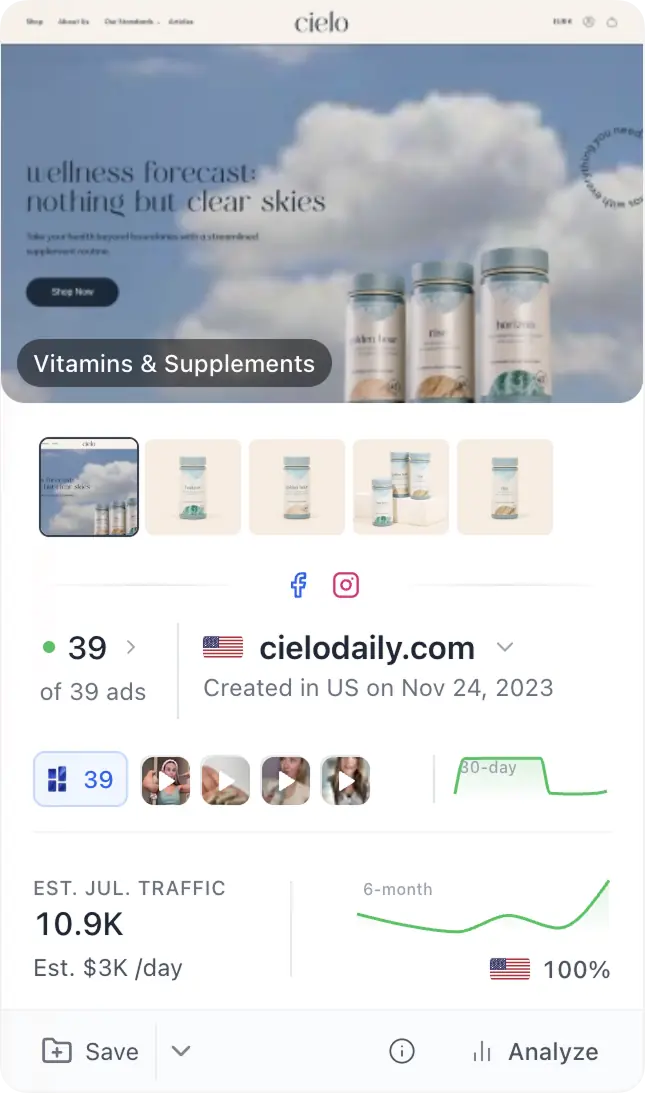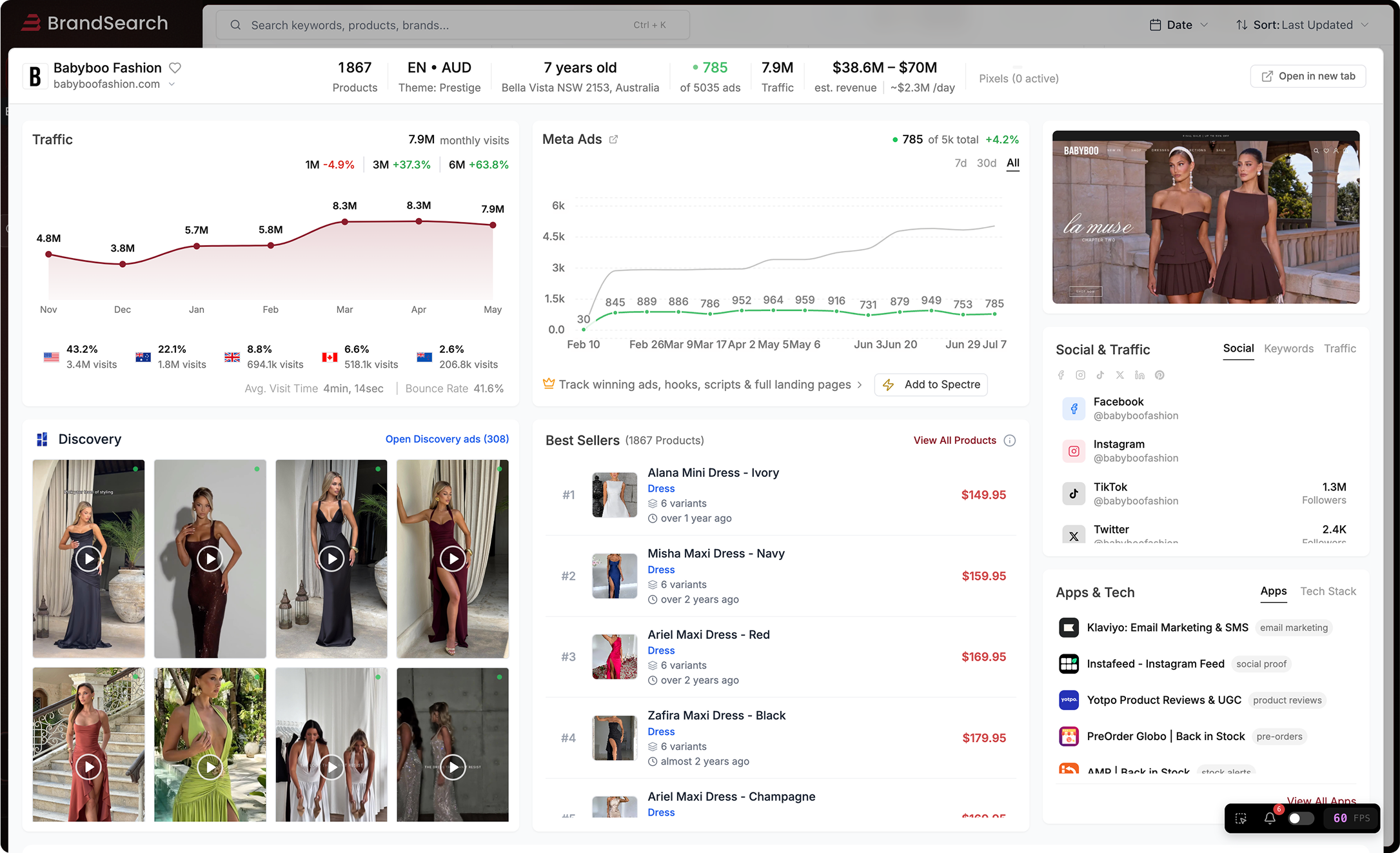Customer Lifetime Value (LTV) Calculator
Calculate your customer's lifetime value to determine your maximum acquisition cost and optimize your retention strategy.
First Time Using This Calculator?
Before calculating your LTV, you need to know your exact profit margin per order. If you haven't calculated this yet, start with our Profit Margin Calculator to determine your real profit after all variable costs (COGS, shipping, fees, packaging). Using your AOV instead of your actual profit margin will give you completely wrong results.
Customer Lifetime Value
$180.00
Healthy: Your LTV:CAC ratio is good. You have room to scale acquisition while staying profitable.
Your Customer Metrics
The average amount a customer spends per order.
Your profit after all variable costs per order.
Don't know your profit margin? Use our Profit Margin Calculator to calculate it first.
How many times a customer purchases from you per year on average.
How long a customer continues buying from you on average.
Your average cost to acquire a new customer (ad spend + marketing costs).
Recommended Max CAC: $60.00
Based on a healthy 3:1 LTV:CAC ratio. You can spend up to this amount on acquisition and remain profitable.
Impact of Purchase Frequency on LTV
1x/year
LTV: $60
$10
Net Profit
Ratio: 1.2:1
2x/year
LTV: $120
$70
Net Profit
Ratio: 2.4:1
3x/year
LTV: $180
$130
Net Profit
Ratio: 3.6:1
4x/year
LTV: $240
$190
Net Profit
Ratio: 4.8:1
6x/year
LTV: $360
$310
Net Profit
Ratio: 7.2:1
12x/year
LTV: $720
$670
Net Profit
Ratio: 14.4:1
Increasing purchase frequency by just 1x per year can dramatically impact your profitability. This is why retention matters.
Master Customer Lifetime Value to Scale Profitably
Most e-commerce brands focus obsessively on acquiring new customers while ignoring the gold mine they already have: existing customers. Understanding your Customer Lifetime Value (LTV) is the difference between playing a short-term game and building a sustainable, scalable business.
What is Customer Lifetime Value (LTV)?
Customer Lifetime Value is the total profit you earn from a single customer over their entire relationship with your brand. It's not just about the first purchase—it's about all the purchases they make over months or years.
The formula is simple but powerful:
LTV = Profit Margin per Order × Purchase Frequency × Customer Lifespan
If your average customer spends $100 per order with a $30 profit margin, buys 3 times per year, and stays with you for 2 years—your LTV is $180 ($30 × 3 × 2).
Why LTV Changes Everything for Your Ad Strategy
Here's the harsh truth: most of your competitors are only optimizing for first-purchase profitability. They're leaving money on the table—and you can exploit that.
When you understand LTV, you can afford to spend more on customer acquisition than your competitors because you're playing the long game. If your LTV is $180 and your competitor's is only looking at a $30 first-purchase profit, you can outbid them 6:1 and still be more profitable over time.
This is exactly how brands like Dollar Shave Club, Glossier, and other DTC giants scaled so aggressively. They knew their numbers.
The LTV:CAC Ratio – Your North Star Metric
Your LTV:CAC ratio tells you if your business model is sustainable. Here's the breakdown:
- Below 1:1 – You're losing money on every customer. Fix this immediately.
- 1:1 to 3:1 – You're breaking even or barely profitable. Risky territory for scaling.
- 3:1 to 5:1 – Healthy and sustainable. You're ready to scale acquisition.
- Above 5:1 – Excellent unit economics. You should be scaling aggressively and could afford to increase CAC.
The sweet spot for most profitable e-commerce brands is a 3:1 ratio. For every dollar you spend acquiring a customer, you should earn at least three dollars in lifetime profit.
Acquisition vs. Retention: The Real Arbitrage
Here's a stat that should change your entire marketing strategy: Increasing customer retention by just 5% can increase profits by 25-95% (Harvard Business Review).
Why? Because acquiring a new customer costs 5-25x more than retaining an existing one. Yet most brands dump 90% of their budget into acquisition and ignore retention entirely.
Look at the "Impact of Purchase Frequency" chart above. See how dramatically your profit increases when you get a customer to buy just one more time per year? That's the power of retention.
How to Increase Your LTV (Practical Tactics)
You have three levers to pull to increase LTV:
- Increase Profit Margin per Order: Use upsells, bundles, and price optimization. See our Profit Margin Calculator to optimize this.
- Increase Purchase Frequency: Implement email flows (post-purchase, win-back campaigns), loyalty programs, subscriptions, SMS marketing, and retargeting ads. This is the highest-leverage play.
- Increase Customer Lifespan: Improve product quality, customer service, and brand experience. Build a community around your brand so customers stay longer.
Most brands focus only on #1. Smart brands optimize all three.
Using LTV to Set Your Maximum CAC Target
Once you know your LTV, setting your maximum Customer Acquisition Cost is simple:
Max CAC = LTV / 3
This ensures a healthy 3:1 ratio. If your LTV is $180, you can spend up to $60 acquiring a customer and still maintain strong unit economics.
Now when you're running Meta Ads or Google Ads, you have a clear target. If your current CAC is $80, you know you need to either improve your ad performance or increase your LTV through retention strategies.
Pro Tip: The Subscription Advantage
Want to 3-5x your LTV instantly? Implement a subscription model. Even if only 20% of your customers subscribe, those subscribers will have 3-10x higher LTV than one-time buyers. Brands like Native, Quip, and Ritual used subscriptions to justify much higher CACs and scale faster than competitors stuck in the one-time purchase model.
Frequently Asked Questions
Customer Lifetime Value (LTV or CLV) is the total profit you expect to earn from a customer over their entire relationship with your business. It's calculated by multiplying your profit margin per order by purchase frequency and customer lifespan.
Free E-Commerce Tools
Explore our complete suite of free calculators and tools designed to help you build a profitable e-commerce business.
Profit Margin Calculator
Calculate your exact profit per order to use as the foundation for accurate LTV calculations.
Calculate Margins →Breakeven ROAS Calculator
Use your LTV to justify higher acquisition costs and outbid competitors on first-purchase profitability.
Calculate ROAS →Cashflow Calculator
Project cashflow runway to ensure you can afford to spend up to your max CAC without running out of cash.
Project Cashflow →Revenue Calculator
Estimate Amazon product revenue and daily sales volume for better product research and validation.
Calculate Revenue →Facebook Comments Generator
Create realistic Facebook comment threads for your ad mockups and marketing presentations.
Generate Comments →

Ready to build a multi-million $ brand ?
Get the unfair advantage to find what's working now. Don't be a lucky $1k/day dropshipper, but the next $100K/day outscaler. Start your next winning brand today.
Trusted by leading agencies and brand builders